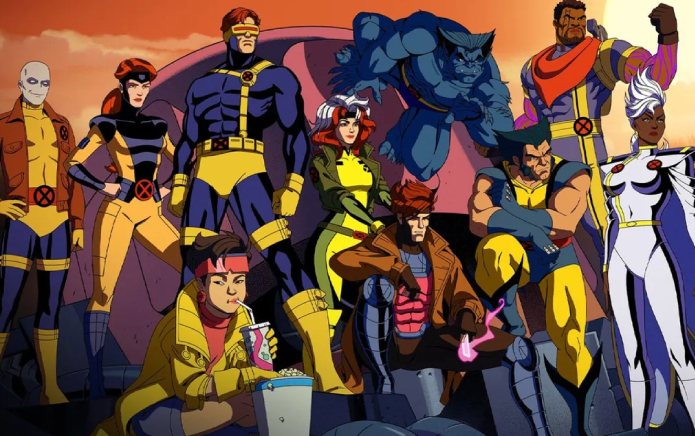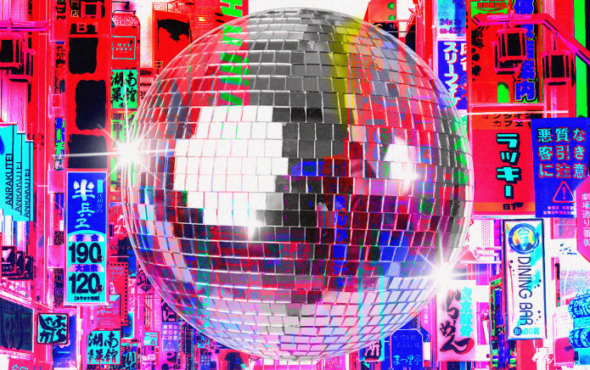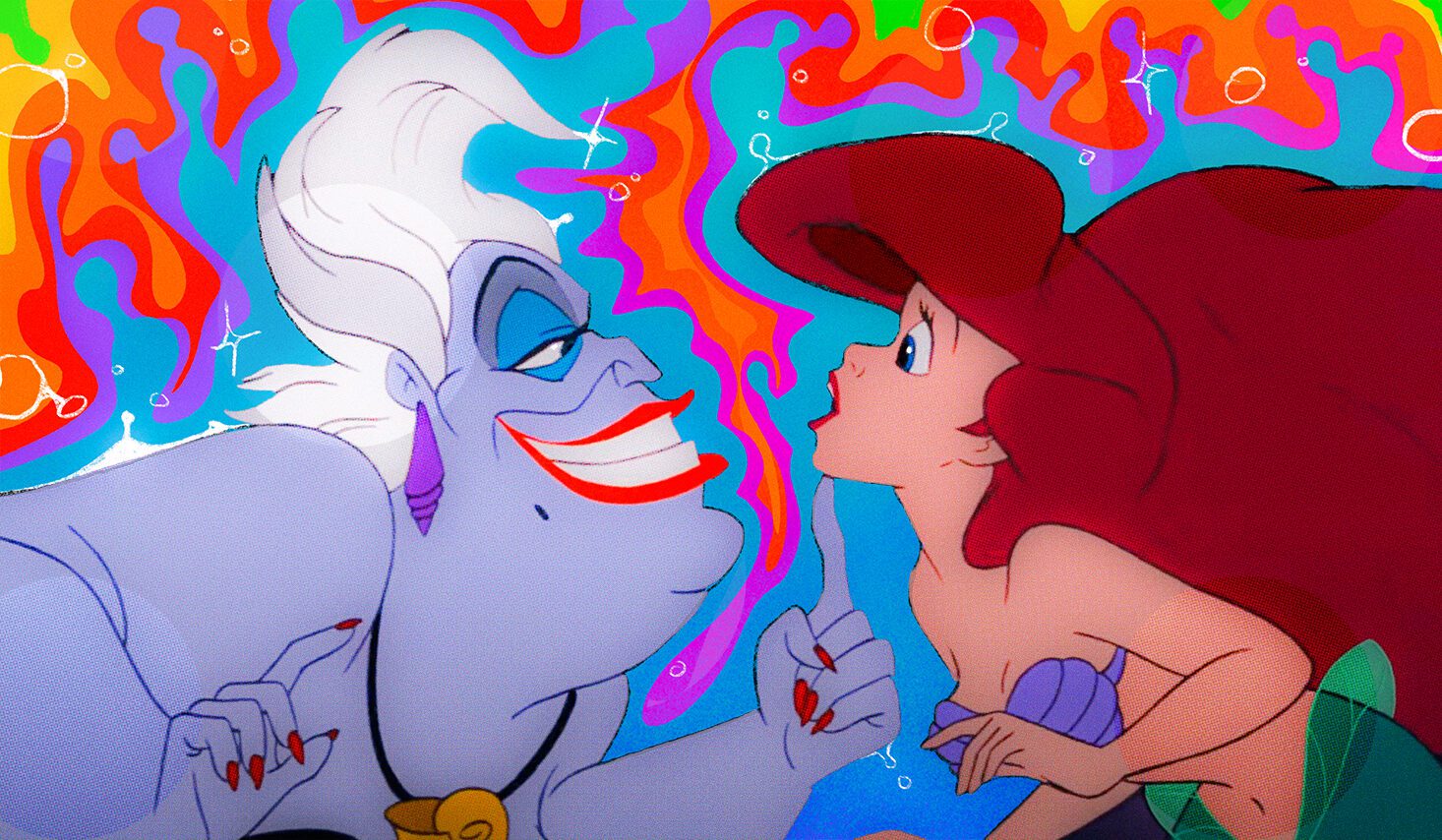
For the preponderance of the history of pop culture, there has been a dearth of queer stories. This has resulted in a queer read of many of our favourite characters, films, and shows – regardless of whether the proof was in the pudding.
With the imagining of stories and characters as specifically queer, the better idiom is the accurate one: the proof is in the eating of the pudding. After all, it is up to us, the audience, to say what we feel when consuming our media.
The Little Mermaid, which exists in the pop culture zeitgeist most commonly as Disney’s animated musical, is ripe for this kind of queer-ing read. Happily for those of us who find kindred spirits in Ariel’s transformation or Ursula taking up space, we aren’t taking as much liberty with the Disney story as one might think. This is thanks in large part to writer-producer Howard Ashman.
Ashamn, a gay Jewish man, was responsible for imbuing so much of the movie with queer themes, hitherto unexplored explicitly (or as explicitly as they could be) by Disney. Perhaps the most famous element of Ashman’s queer influence is in the character Ursula.
The (arguable) villain, created by Ashman and not found in Hans Christen Andersen’s original, was inspired by the famed drag queen Divine.
Ursula performs femininity the way a drag performer does. She accentuates stereotypically feminine assets — her hips, her lips — and drapes her eels Flotsam and Jetsam around her like an underwater feather boa.
Not only does Ursula physically inhabit the mannerisms of drag queens, but she is an active foil to the (mer)patriarchy that exists within the film. Those confines have stifled Ariel, and Ursula is the only woman to whom she can look as a model of how to break free of those constraints.
Divine’s manager, Bernard Jay, wrote in his book Not Simply Divine! that the gay community “openly and proudly identified with the determination of the female character Divine.”
Ursula’s determination, though we acquiesce was somewhat villainous, is no better represented than in ‘Poor Unfortunate Souls’. In this song, the theme of performative gender is clear. Ursula is literally instructing Ariel that the way to win the heart of human Prince Eric is not just to be a woman, but to act like a woman.
This notion that femininity and womanhood is an act, and that anyone can perform it, is distinctly queer and in direct response to the political climate at the time. Ashman was working in the midst of US President Ronald Reagan’s anti-gay stance, while panics over ‘family values’ were sweeping America (sound familiar?) and the AIDS epidemic was being largely ignored by Republicans in power — unless they were fearmongering about the ‘gay plague’, God’s punishment for homosexuality.
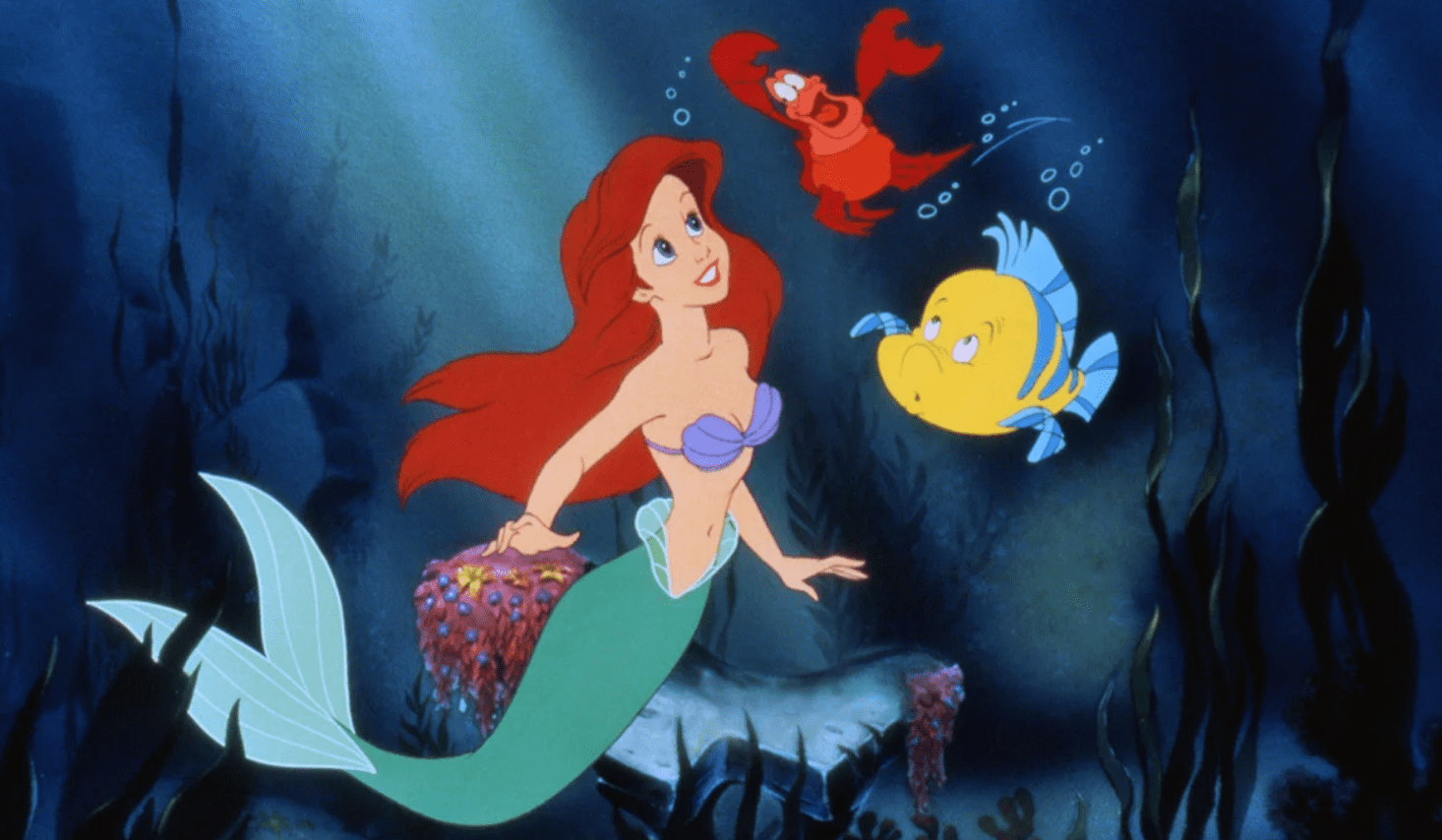
Set against this backdrop, to suggest that gender and sexuality were malleable and performative was revolutionary. Ursula became Schrodinger’s villain. With the lid shut, she was simply the baddie. Lift it, and you find a depth of queer resistance (and, yes, villainy still. This is a movie, after all).
Through Ursula, Ariel can imagine herself in a different way: empowered. She has agency over how she inhabits her own body, how she takes up space, and how she fits into the society into which she was born.
Ariel is struggling with the parts with which she was assigned at birth (both her womanhood and being a mermaid) and what they mean for her autonomy. She is frustrated by the strict gender roles, her yearnings for a different life are misunderstood and maligned, and the love that she wants to act on is deemed not only impossible but irresponsible and wrong.
Her desire to transform her physical self to be her true self and act on her feelings of love was an apt metaphor for living as a closeted homosexual. Set against the contemporary ‘gender-critical’ discourse and its obsession with vilifying the trans community, Ariel’s transformation allegory is as overtly important and meaningful as it was in the 80s.
What makes Ariel unique, particularly in comparison to Ursula, is that The Little Mermaid’s creators weren’t only taking inspiration from the contemporaneous queer experience: Hans Christen Andersen wrote The Little Mermaid as a queer allegory in 1837.
Andersen was seemingly besotted with the son of his American patrician patron Edvard Collin. He wrote copious letters, which were described in My Dear Boy: Gay Love Letters through the Centuries by Rictor Norton as a declaration of his love.
While Collin and Andersen had a mutual bond, for Andersen it had blossomed into a “longing” for Edvard “as though [he] were a beautiful Calabrian girl,” as he wrote in a letter.
Of Andersen’s original tale, Journalist Gabrielle Bellot wrote: “[it] was [Andersen’s] attempt to translate his frustrated queer desires into the language of a fantastical story… It was an encrypted, but plain-enough look into the queer love he was never able to find for himself.
“That he would reveal his desires through a story about things in the deep is only fitting, given what Andersen wrote to Edvard in an 1835 letter. ‘If you looked down to the bottom of my soul,’ he said, ‘you would understand fully the source of my longing—and pity me. Even the open, transparent lake has its unknown depths which no divers know.'”
This description of Andersen’s unspeakable longing mirrors the world in which Ariel frustratingly inhabits.
At the end of Andersen’s tale, her beloved Eric marries a human woman (as Edvard did, too) and unable to kill Eric as he sleeps she flings herself off the boat and dissolves into sea-foam. However, by not returning to the closet of her underwater world, she doesn’t die but instead is transformed into an ethereal earthbound spirit.
With all this knowledge at their fingertips, it’s easy to see how Disney’s John Musker, Ron Clements, and Howard Ashman were able to easily imbue Ariel with this same longing and eventual freedom — even if it is Disney-fied.
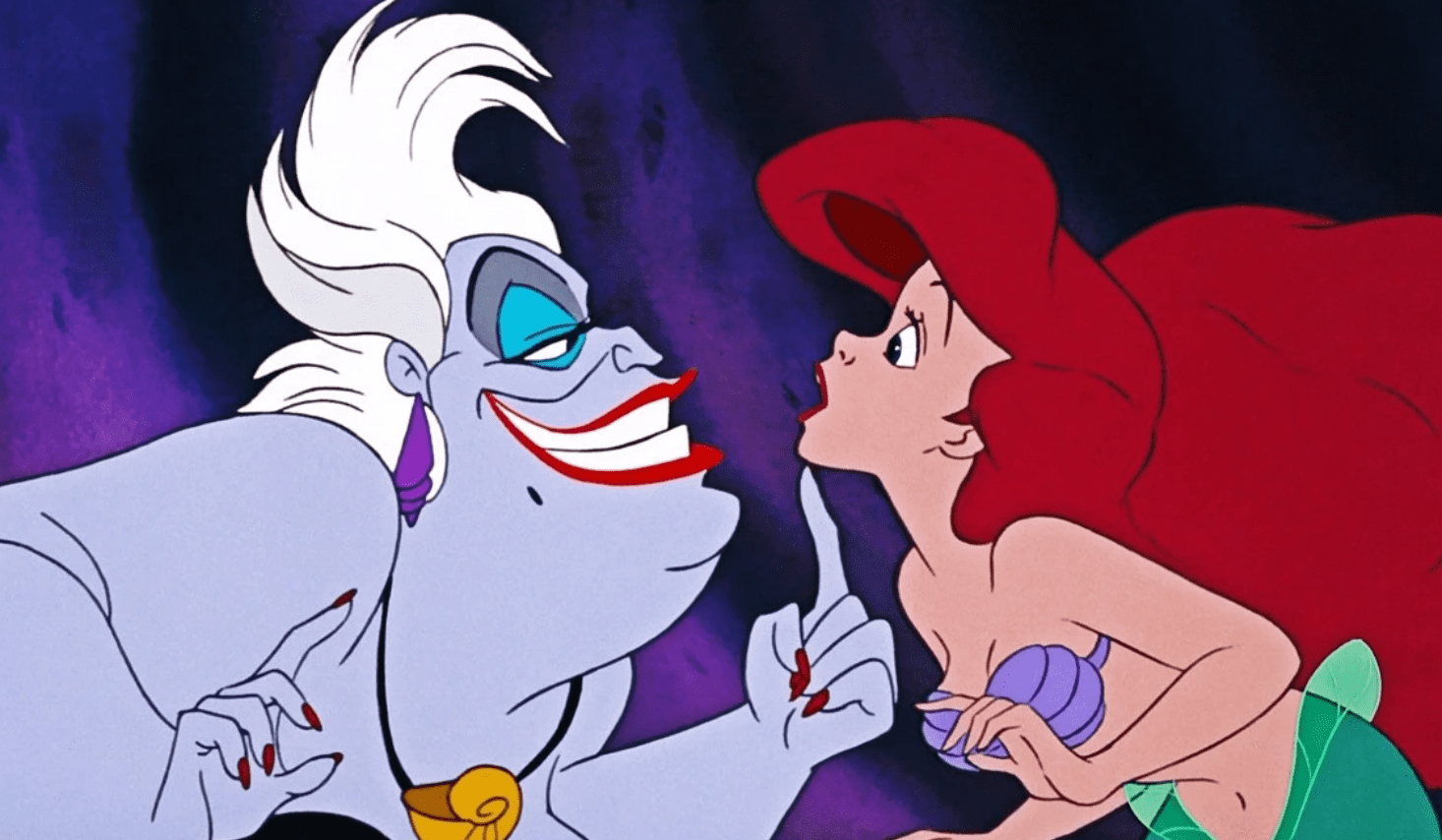
Ursula’s fate is sealed by her jealousy over Ariel’s successful transition into happiness, something she was either denied or unable to achieve. That she must die as a result is part and parcel of early Disney’s formula.
This early animated ‘bury your gay villains’ trope was fairly new at the time. Up until the 1970s, there were almost no queer characters in animation, but cartoons did bend the gender-binary rules. Notably Buggs Bunny, as well as Tom and Jerry, featured frequent cross-dressing. The latter pair were often said to have had homoerotic undertones in their relationship.
Queer-coded characters were the butts of jokes. Male animated characters were tricked into kissing each other as a method of humiliation. At Disney, starting with Ursula, the queer-coded characters were almost exclusively villains. Though Ursula was a villain, The Little Mermaid still bucked the trend of early animation.
Mulan is also an exception. Her gender fluidity and the subsequent implied-bisexuality of her love interest is another nuanced portrayal of gender and queerness. Much like Ariel before her, Mulan had to leave behind a world whose binary roles did not allow her to be her true self.
Comparatively, it feels easier to sweep Ariel’s symbolism under the rug and reduce her story to a mer-girl pining for a boy. The fact that her happily ever after is as a wife does play into the idea that a woman’s sole goal for happiness and fulfilment is marriage.
However, what this view forgets is that Ariel had to transform in order to get the love she wanted. She didn’t leave a happy family dynamic and society that accepted her as she was. She underwent a painful separation, a physical change, and a period of internal growth so that she could be happy.
In this way, it’s hard not to see her marriage as a triumph. We are still working within the confines of a society and entertainment industry that prioritise a certain kind of couple. Even bound by those strictures, Ariel manages to be a symbol of positive queerness.
The story itself isn’t the only thing that has a queer resonance. Up until The Little Mermaid, Disney’s musicals were mostly jukebox style. Ashman introduced the American musical theatre style to The Little Mermaid, resulting in songs that not only reveal more about the characters but move the plot forward.
In the DVD documentary, Ariel’s voice actor Jodi Benson said: “The characters actually run out of words, can’t express themselves anymore, and it has to come out in song.”
Not to give credence to a stereotype, but musical theatre has often allowed for a more bombastic exploration of emotion and thus is often tied to a certain kind of ‘gay’ expression. The Little Mermaid, then, not only in message but in medium, became even queerer.
Ashman himself coached the actors on their vocal expressions. Pat Carrol, who voiced Ursula, recalled a time when he enacted ‘Poor Unfortunate Souls.’ “I watched every body-move of his, I watched everything, I watched his face, I watched his hands, I ate him up!” she said.
If The Little Mermaid was Andersen’s personal story, 1991’s Disney adaptation of Beauty and The Beast was Ashman’s (so said composer Alan Menken). In the final stages of his AIDS diagnosis, Ashman created a character whose body had been changed, had been maligned by society, and for whom only love and acceptance could be the cure he needed.
Ashman died before he was able to accept his Academy Award.
Ashman’s work, integrally tied to his lived experience as a gay man, irrevocably transformed the studio and influenced every Disney film to come after. And The Little Mermaid was where it all began.
